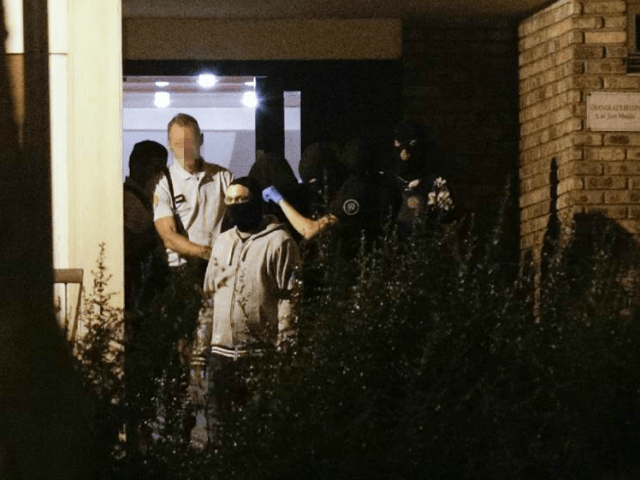(AFP) – Long cast in supporting roles in the shadow of their male counterparts, women are taking an increasingly active role in the organisation and execution of attacks by jihadist groups.
That much emerges clearly from Thursday’s arrest of three heavily radicalised women plotting an attack in central Paris using a car laden with gas cylinders.
Anti-terrorism prosecutor Francois Molins says the would-be attackers were guided by the Islamic State group in Syria.
“A terrorist cell made up of young women totally receptive to the deadly ideology of Daesh has been dismantled,” Molins said at a news conference Friday, using the Arabic name for IS.
Three women, led by 19-year-old Ines Madani, known to intelligence services after trying several times to travel to Syria, were arrested after the car was found abandoned near Notre Dame cathedral in Paris on Sunday.
It swiftly emerged there were close links between the trio and recent jihadist attacks in France.
Molins said the foiled plot showed a change in the role of women in jihadist groups.
Whereas they were once confined to domestic tasks, that view is now out of date and they are now also viewed as “fighters”.
– Remotely guided –
“The terrorist organisation uses not only women, but young women, who get to know them and develop their plot from a distance,” he said.
He added the women had been guided remotely from “Syria-based individuals within the ranks of the Daesh terrorist organisation (which) shows that this organisation intends to make combatants of women”.
While this marks the first time women have assumed the combatant role in France it is not a novel development for the likes of Syria and Iraq.
It was 11 years ago, in November 2005, that Muriel Degauque, a Belgian convert to Islam, became the first western female suicide bomber when she detonated explosives in an attack on an Iraqi police patrol near Baghdad, killing five policemen.
Al-Qaeda in Iraq, which morphed into the Islamic State, has organised several suicide attacks carried out by female bombers.
In Europe, a previous, non-fatal, attack in May 2010 saw student Roshonara Choudhry stab and seriously injure British lawmaker Stephen Timms, admitting she intended to kill him for having voted in favour of military action in Iraq.
– ‘Not innocent bystanders’ –
“There haven’t been many cases, but Daesh is now trying to exploit all the options they have,” says Magnus Randstorp, an expert on Islamic movements and research director at the Centre for Asymmetric Threat Studies (CATS) at the Swedish National Defence College.
“Women inside Daesh should not be looked upon as sort of innocent bystanders, because many are very committed, provide support roles, logistic roles, smuggling, passing messages,” Randstorp told AFP.
“It is a worrying development for the security services. They have always watched women, but now they really have to look at them as operatives in attacks as well.
“This of course will complicate how they spend their resources. This is very worrisome. And there are also copycat effects, so other women may try.
“In some places they even use children, inside Syria and Iraq,” he noted.
In the case of the abortive gas canister attack on Paris the arrested women appeared to lack expertise in dealing with explosives and left their vehicle abandoned, poorly parked and with its hazard lights on — almost as if to invite attention.
Yet IS have already shown with last November’s coordinated Paris attacks which killed 130 that they can bring in to Europe an experienced bombmaker capable of making explosive belts.
The fear is that a female bomber could activate one all the more easily as she might attract less suspicion than a male jihadist counterpart.

COMMENTS
Please let us know if you're having issues with commenting.